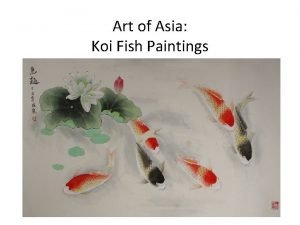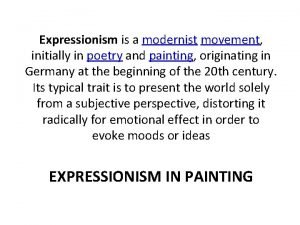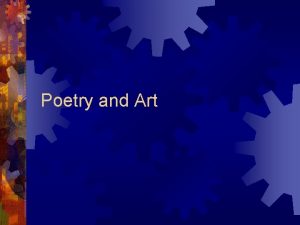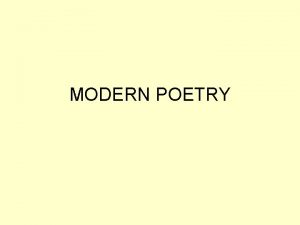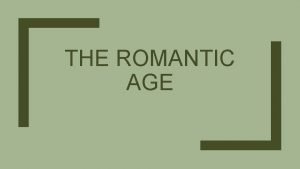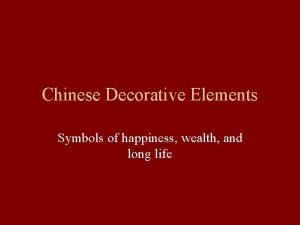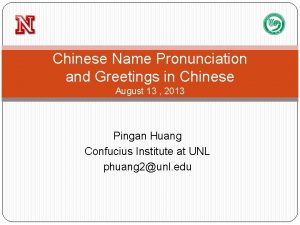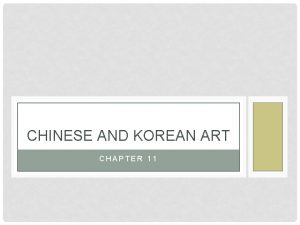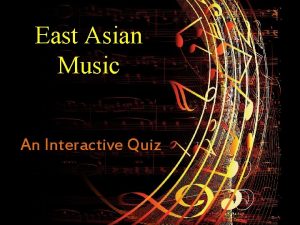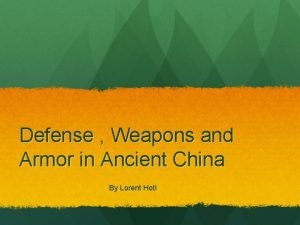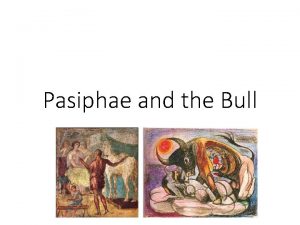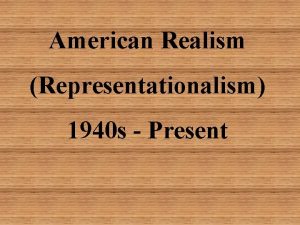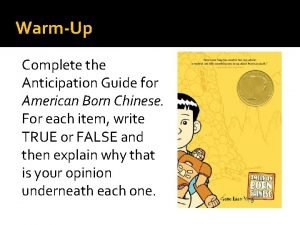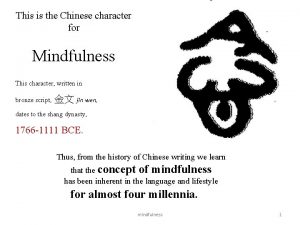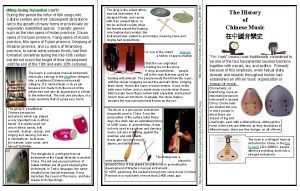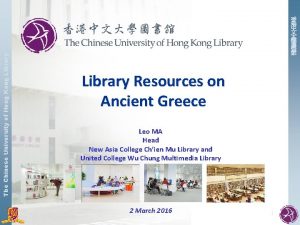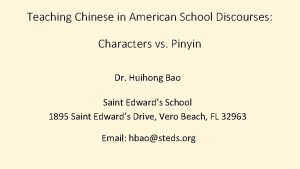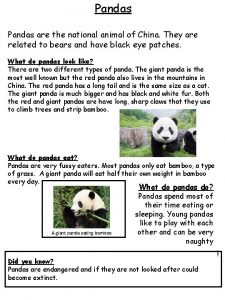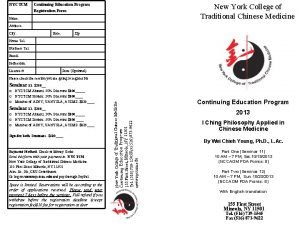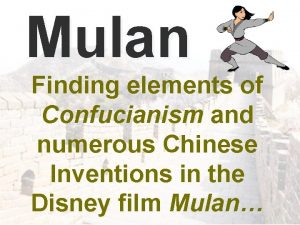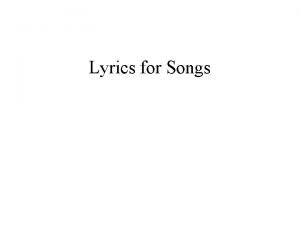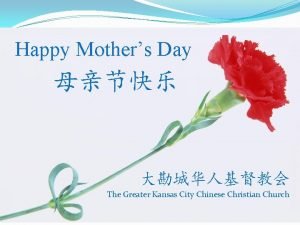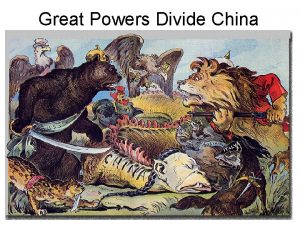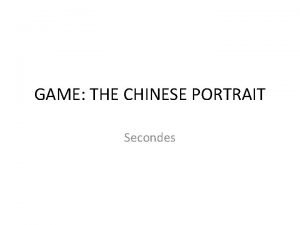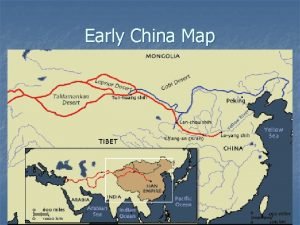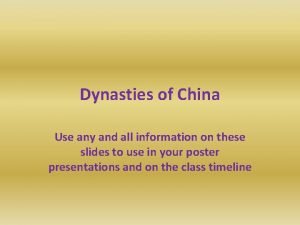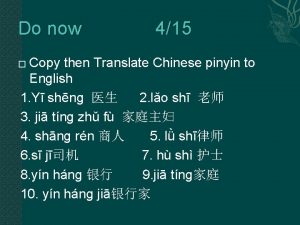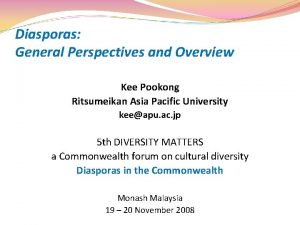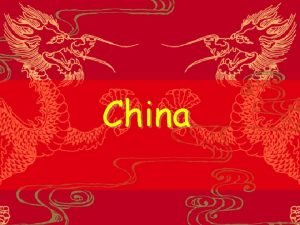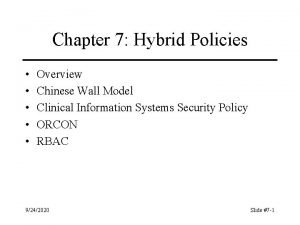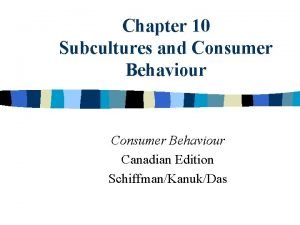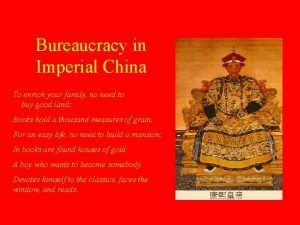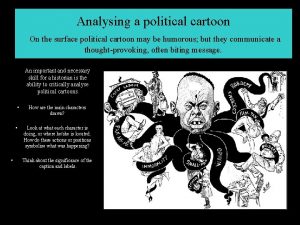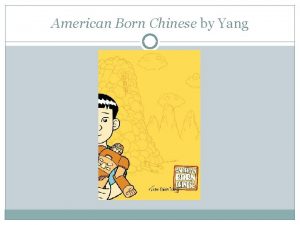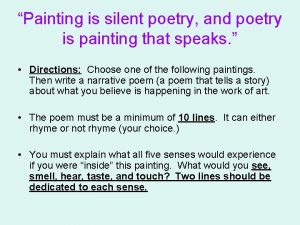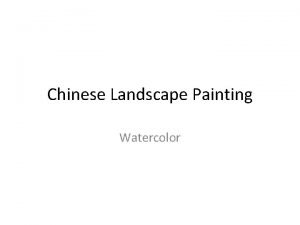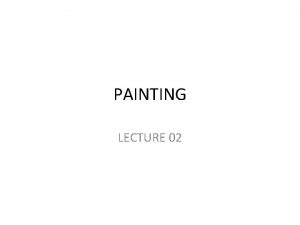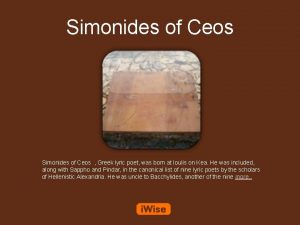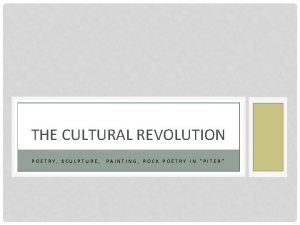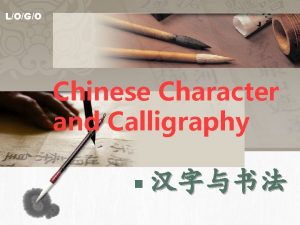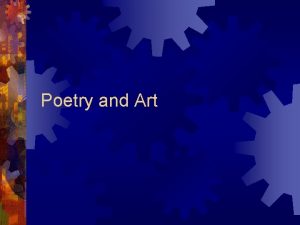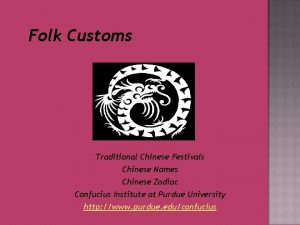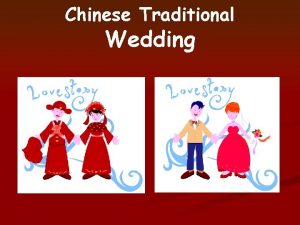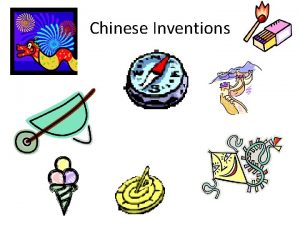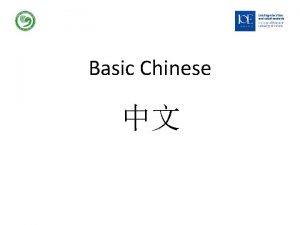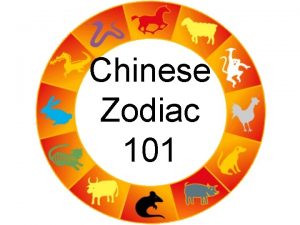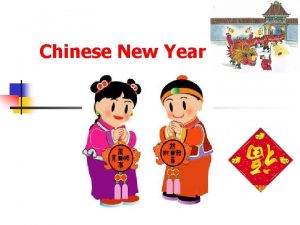Chinese Painting A Poetry and Painting Simonides 5













































































- Slides: 77

Chinese Painting A. Poetry and Painting

• Simonides (5 -4 century BC): Painting is silent poetry, and poetry is painting with the gift of speech. • Su Dongpo (苏东坡,11 century AD ): Tasting the poems of Wang Wei, you may enjoy paintings in them. (味摩诘诗,诗中 有画) • Su himself was praised as taking poetry as speaking painting, and painting as silent poetry. (以诗为有声画,画为无声诗)

• Zhuang Zi, (庄子,5-3 century BC): The trap exists because of the fish; once you’ve gotten the fish, you can forget the trap… Words exist because of the meaning; once you’ve gotten the meaning, you can forget the words. • (得鱼忘筌……得意忘言。)


• Four treasures of the painter: • brushes, inkstick, inkstone, and paper

• There are mainly two techniques in Chinese painting: • Meticulous painting– Gong bi ( 笔) often referred to as "court-style" painting • Ink-water painting – Shui mo (水墨) , It is also referred to as “xie yi” (写意) or freehand style. • Meticulous painting is the main form of traditional Chinese painting until 11 th century.




B. Early Figure Painting 人物龙凤帛画 湖南长沙陈家 大山 31. 2 x 23. 2



Among them portrait brick, with a wide range of subject matters, a variety of forms of expression, a style of pursuing likeness in spirit, simple but powerful, extensive and vigorous, was almost the symbol of the Han Dynasty art. The shaping skill, painting technique, and style of composition of coffin chamber mural all had broken through the simplex feature since the later Period of Spring and Autumn, laid a foundation for the maturity of Chinese painting. The T Shape Banner Painting


• The T shaped banner painting depicted the Chinese abstraction of the cosmos and the afterlife at the time. • On the T-shaped painted silk garment, the uppermost horizontal section of the T represents heaven. The bottom of the vertical section of the T represents the underworld. The middle (the top of the vertical) represents earth. In heaven we can see Chinese deities such as Nu wa and Chang e, as well as Daoist symbols such as cranes (representing immortality). Between heaven and earth we can see heavenly messengers sent to bring Lady Dai to heaven. Underneath this are Lady Dai's family offering sacrifices to help her journey to heaven. Underneath them is the underworld - two giant sea serpents intertwined. The funeral banner called “Mingjing”(铭旌).







• Gu Kaizhi(顾恺之, 344 -405) was born into an official family in Wuxi, and served as a government officer at a young age. Having toured many beautiful places, Gu was proficient in writing poetry and essays as well. • 传神写照,俱在阿堵 之中

• It believes that Gu created more than 70 paintings based on historical stories, Buddha, human figures, birds, animals, mountains and rivers. His three existing paintings are the earliest hand scrolls far : • 1/ Admonitions of the Instructress to the Palace Ladies (《 女史箴图》). It illustrates nine stories from a political satire about (贾后) written by Zhang Hua(张华). Beginning in the eighth century, many collectors and emperors left seals, poems, and comments on the scroll. The Admonitions scroll was stored in the emperor's treasure until it was looted by the British army in the Boxer Uprising in 1900. Now it is in the British Museum collection, the copy in Tang dynasty. • 2/ Nymph of the Luo River. (《洛神赋图》) It survives in three copies dating to the Song dynasty. • 3/ Wise and Benevolent Women (《列女仁智图》) survives as a copy dating to the Song dynasty. It illustrates a subset of the women described in the Han dynasty work Biographies of Exemplary Women. •



• Nymph of Luo River illustrates a romantic prose-poem by Cao Zhi (192 -232), the third son of Cao (155 -220) who ruled north China during the collapse of the Han dynasty (206 BCE-220). It depicts the meeting between Cao Zhi and the Goddess Luoshen at Luoshui River, vividly capturing the mood of their first meeting and eventual separation. Gu emphasized his subjects' expressions, with the stones, mountains and trees having an ornamental purpose. In some degree, Gu's paintings, are similar in style to the Dunhuang murals.








• The poetic narrative was interpreted by the painter in ten episodes. In the second section at the beginning of the scroll, Cao Zhi the noble poet, under a parasol with eight attendants, catches sight of a wondrous lady by the side of a cliff. As the poem described her, "The lady, with shoulders shaped as if by carving, waist narrow as though bound with white cords, is wearing a high coiffure. Her eyebrows are long and curving. " "Who could she be? " asked the poet. "Perhaps the Luo River Nymph, " replied the charioteer. At the water's edge, the Nymph's robe and scarves are fluttering in the breeze. In the seventh scene, the Nymph departs in a dragon-pulled carriage, escorted by two flying fish, a two-armed eel-like creature, a dragon-like animal with antlers, and two unicorns with white horns. With a companion, the Nymph glances back, appearing grieved and melancholy.

• The painting, in ten episodes, illustrates the prose -poem. The main characters and key elements reappear several times as the story unfolds. The painting retains the simple approach of early painting in which the artist used direct bright colors but did not texture the landscape with brushstrokes. The trees are portrayed with a simple structure like parsley. The style as such conforms to early painting techniques in which "human figures are so large that they dwarf the background mountains; water is so small that it can not hold a single boat. "

C. Six Principles • The “Six principles of Chinese painting” were established by Xie He (谢赫,479-502), a writer, art historian and critic. He is most famous for his "Six principles for painting, 绘画六法), taken from the preface to his book "The Record of the Classification of Old Painters" (《古 画品录》). Keep in mind that this was written circa 550 A. D. and refers to "old" and "ancient" practices. The six elements that define a painting are: • •

• 1,“Spirit Resonance”(气韵生动), or vitality, and seems to translate to the nervous energy transmitted from the artist into the work. The overall energy of a work of art. Xie He said that without Spirit Resonance, there was no need to look further. • 2,“Bone Method”(骨法用笔), or the way of using the brush. This refers not only to texture and brush stroke, but to the close link between handwriting and personality. In his day, the art of calligraphy was inseparable from painting. • 3,“Correspondence to the Object”(应物象形), or the depicting of form, which would include shape and line.

• 4,“Suitability to Type”(随类赋彩), or the application of color, including layers, value and tone. • 5,“Division and Planning”(经营位置), or placing and arrangement, corresponding to composition, space and depth. • “Transmission by Copying”(传移模写), or the copying of models, not only from life but also the works of antiquity.



• D. Painting and History • Zhan Ziqian (展子虔, around 531 -604), whose Buddhist monastery murals had placed much influence on later painting. Spring Excursion represented his accomplishment in landscape painting.



• Beginning in the Tang Dynasty, the landscape paintings began to be booming. In these landscapes, the purpose was not to reproduce exactly the appearance of nature but rather to grasp an emotion or atmosphere so as to catch the "rhythm" of nature.


Yan Liben(阎立本,600 -673) • Yan was a famous Chinese painter and government official of the early Tang Dynasty. His notable works include the Thirteen Emperors Scroll (历代帝像) ,the portraits of various Chinese emperors from the Han Dynasty (202 BC-220 AD) up until Sui Dynasty (581 -618).

• Emperor Wu of Jin


• Emperor Yang of Sui

• 步辇图,Emperor Taizong(太宗,r. 626649) receives Ludongzan(禄东赞), ambassador of Tibet, at his court;

• Bunian Tu in detail


职贡图(Zhi Gong Tu, Bring Tributes)

Zhou Fang (周昉, 730 -800), painter in mid-Tang Dynasty • Zhou lived in the Tang capital of Chang’an, and came from a noble background and this was reflected in his works, which included 簪花仕女图, Court Ladies with Flower Hairdresses. He was influenced by the pure and detailed style of Gu Kai-zhi, his paintings of beautiful women were said to be all incredible masterpieces.




顾闳中:韩熙载夜宴图 • Gu Hongzhong: Night Revels of Han Xizai • This Five Dynasties handscroll portrays the scandalous private life of Han Xizai, senior minister to three "emperors" of the Southern Tang Dynasty in the mid-tenth century.










• The painting Armand Hammer give back to Deng Xiaoping



• In most figure paintings in China, it is relatively rare to see men and women juxtaposed so closely in a private interior setting. Judging from the physical proximity, demeanor and facial expressions of the individuals in the detail below, what kind of event or situation do you think the artist was trying to portray? • Are the individual personalities evident, and how does the artist communicate them? Through details of clothing and hairstyle? Behavior? Body language?

• What does this detail tell us about the way people of the elite class entertained?

• In the details below and elsewhere on this page, how would you characterize the differences in physical demeanor of men and women as they communicate with others? Do the men have a more uniform appearance throughout the painting, and what might account for this?

• Is there a difference in appearance among individual women in the painting? Do the musicians above seem to have a different mode of dress or hairstyle than other female companions?

• Does the setting in this scene imply anything about the type of interaction or what might be communicated between these individuals?

• what differences can you discern in social

• Compare the female figures in the details below. What do their postures and body language communicate about their attitude toward their surroundings or the people they are interacting with?
 Anglo chinese school
Anglo chinese school Opera mask
Opera mask Coy fish paintings
Coy fish paintings A modernist movement initially in poetry and painting
A modernist movement initially in poetry and painting Art is silent poetry
Art is silent poetry Ode to an athlete dying young
Ode to an athlete dying young Metaphysical and cavalier poets
Metaphysical and cavalier poets Traditional poetry vs modern poetry
Traditional poetry vs modern poetry Augustan poetry vs romantic poetry
Augustan poetry vs romantic poetry Jon stallworthy the almond tree
Jon stallworthy the almond tree Ib chinese a language and literature
Ib chinese a language and literature Chinese symbol for health, wealth and happiness
Chinese symbol for health, wealth and happiness Chinese names pronunciation
Chinese names pronunciation Chinese and korean art
Chinese and korean art Language in life
Language in life Han china spice chart
Han china spice chart Sakura song meter
Sakura song meter Ancient china weapons
Ancient china weapons Chinese immigration to canada push and pull factors
Chinese immigration to canada push and pull factors Balzac and the little chinese seamstress quotes
Balzac and the little chinese seamstress quotes Pasiphaë
Pasiphaë Redlin and son painting inc
Redlin and son painting inc The virtual instructor elements of art
The virtual instructor elements of art X sheet animation
X sheet animation American born chinese anticipation guide
American born chinese anticipation guide Chinese name apa citation
Chinese name apa citation Tung shin tcm doctor
Tung shin tcm doctor Chinese character for mindfulness
Chinese character for mindfulness Traditional chinese percussion instruments
Traditional chinese percussion instruments The great leap forward ap world history
The great leap forward ap world history Chinese communist revolution ap world history
Chinese communist revolution ap world history Cuhk library
Cuhk library Language in chinese
Language in chinese Ivitamin studios chinese
Ivitamin studios chinese Rsa
Rsa Role of pharmacognosy in allopathy
Role of pharmacognosy in allopathy Chinese rocket
Chinese rocket Dot translate
Dot translate Chinese possessive pronouns
Chinese possessive pronouns Blaise pascal nationality
Blaise pascal nationality National animal china
National animal china Ny college of traditional chinese medicine
Ny college of traditional chinese medicine Chinese remainder theorem example
Chinese remainder theorem example Examples of daoism in mulan
Examples of daoism in mulan Study designs vcaa
Study designs vcaa Chinese madginford
Chinese madginford In christ along
In christ along Early chinese traders who visited mindoro called our nation
Early chinese traders who visited mindoro called our nation Chinese remainder theroem
Chinese remainder theroem Happy mother's day in chinese
Happy mother's day in chinese Great powers divide china
Great powers divide china Chinese portrait if i were
Chinese portrait if i were Chinese violin
Chinese violin Early china map
Early china map Longest chinese dynasty
Longest chinese dynasty Image translate
Image translate Overseas chinese population
Overseas chinese population Chinese national curriculum core subjects
Chinese national curriculum core subjects Chinese whispers algorithm
Chinese whispers algorithm Chinese postman problem
Chinese postman problem Bpmfdtnl
Bpmfdtnl Panatonic scale
Panatonic scale Chinese club music
Chinese club music Chinese good massage 1
Chinese good massage 1 Chinese handsome man网球教练1
Chinese handsome man网球教练1 Pien fu traditional chinese clothing
Pien fu traditional chinese clothing Civil war resumes
Civil war resumes Chinook checkers program
Chinook checkers program Ancient chinese religion
Ancient chinese religion Chinese wall model example
Chinese wall model example Chinese cuneiform
Chinese cuneiform Canadian subcultures
Canadian subcultures Chinese classifiers
Chinese classifiers Central chinese baptist church
Central chinese baptist church Bureaucracy china
Bureaucracy china Analysing a cartoon
Analysing a cartoon Chinese letter bacteria
Chinese letter bacteria American born chinese analysis
American born chinese analysis


